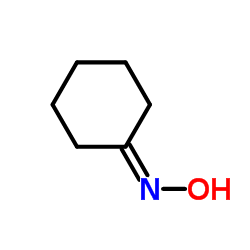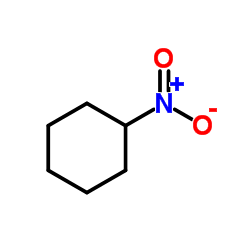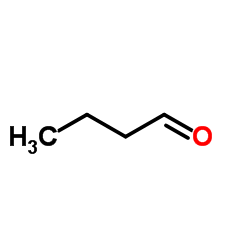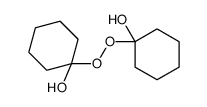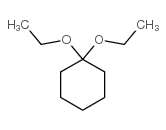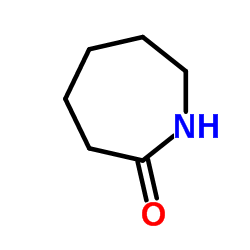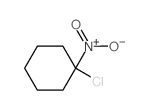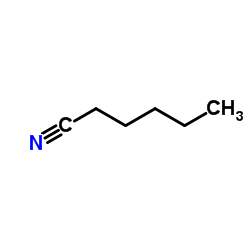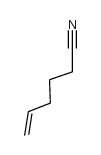100-64-1
| Name | Cyclohexanone oxime |
|---|---|
| Synonyms |
N-cyclohexylidenehydroxylamine
Cyclohexanone oxime EINECS 202-874-0 Cyclohexanone, oxime N-Hydroxycyclohexanimine Cyclohexylimine MFCD00001660 |
| Density | 1.1±0.1 g/cm3 |
|---|---|
| Boiling Point | 208.0±0.0 °C at 760 mmHg |
| Melting Point | 86-89 °C(lit.) |
| Molecular Formula | C6H11NO |
| Molecular Weight | 113.158 |
| Flash Point | 112.4±8.0 °C |
| Exact Mass | 113.084061 |
| PSA | 32.59000 |
| LogP | 1.12 |
| Vapour Pressure | 0.1±0.8 mmHg at 25°C |
| Index of Refraction | 1.529 |
| Stability | Stable. Combustible. Incompatible with strong oxidizing agents. Reacts violently with fuming sulfuric acid at elevated temperature. |
| Water Solubility | <0.1 g/100 mL at 20 ºC |
CHEMICAL IDENTIFICATION
HEALTH HAZARD DATAACUTE TOXICITY DATA
MUTATION DATA
|
| Symbol |

GHS07 |
|---|---|
| Signal Word | Warning |
| Hazard Statements | H302 |
| Personal Protective Equipment | dust mask type N95 (US);Eyeshields;Gloves |
| Hazard Codes | Xn:Harmful; |
| Risk Phrases | R22 |
| Safety Phrases | S36/37/39 |
| RIDADR | NONH for all modes of transport |
| WGK Germany | 1 |
| RTECS | GW1925000 |
| HS Code | 29280090 |
| Precursor 10 | |
|---|---|
| DownStream 9 | |
| HS Code | 29280090 |
|---|

